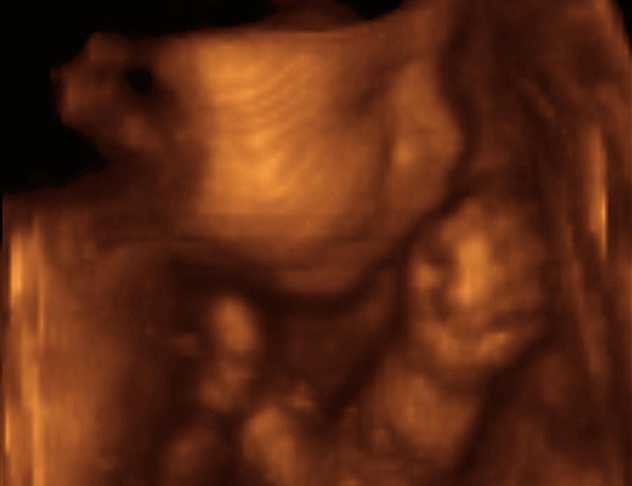 Movies and TV
Movies and TV  Movies and TV
Movies and TV  Creepy
Creepy 10 Lesser-Known Shapeshifter Legends from Around the World
 Animals
Animals 10 Amazing Animal Tales from the Ancient World
 Gaming
Gaming 10 Game Characters Everyone Hated Playing
 Books
Books 10 Famous Writers Who Were Hypocritical
 Humans
Humans 10 of the World’s Toughest Puzzles Solved in Record Time
 Mysteries
Mysteries 10 Scientific Mysteries We Don’t Fully Understand
 Weird Stuff
Weird Stuff 10 Celebrities Who Have Admitted to Alien Encounters
 Our World
Our World 10 Surprising Secrets of Notre Dame Cathedral
 Miscellaneous
Miscellaneous 10 Intriguing Origins of Popular Carnival Rides
 Movies and TV
Movies and TV 10 Actors Dragged out of Retirement for One Key Role
 Creepy
Creepy 10 Lesser-Known Shapeshifter Legends from Around the World
 Animals
Animals 10 Amazing Animal Tales from the Ancient World
Who's Behind Listverse?

Jamie Frater
Head Editor
Jamie founded Listverse due to an insatiable desire to share fascinating, obscure, and bizarre facts. He has been a guest speaker on numerous national radio and television stations and is a five time published author.
More About Us Gaming
Gaming 10 Game Characters Everyone Hated Playing
 Books
Books 10 Famous Writers Who Were Hypocritical
 Humans
Humans 10 of the World’s Toughest Puzzles Solved in Record Time
 Mysteries
Mysteries 10 Scientific Mysteries We Don’t Fully Understand
 Weird Stuff
Weird Stuff 10 Celebrities Who Have Admitted to Alien Encounters
 Our World
Our World 10 Surprising Secrets of Notre Dame Cathedral
 Miscellaneous
Miscellaneous 10 Intriguing Origins of Popular Carnival Rides
10 Horrifying Things That Can Happen During Pregnancy
Having a baby is a very special time in a person’s life, but if something goes wrong, it can feel like a nightmare—occasionally the kind you find on Elm Street.
10 Rh Incompatibility

Your Rh factor is what the little plus or minus symbol in your blood type represents. If a woman’s blood is negative for Rh factor and her partner’s is positive, there’s a good chance their children’s blood will be positive. Since the fetus’s blood intermingles with the mother’s, she may develop antibodies to the proteins in Rh-positive blood, causing her body to reject future Rh-positive children the same way the body rejects organ transplants of incompatible blood type. Women with Rh-negative blood whose partners are Rh-positive have to take shots to prevent these antibodies from forming.
9 Hot Tubs Can Cook Your Baby’s Brain

Relaxing in a hot tub during pregnancy can cause major complications for the fetus. Raising your body temperature as little as four degrees (which can happen by spending even 10 minutes soaking in a hot tub) triples the risk of the fetus developing horrifying conditions like spina bifida and other neurological birth defects. The risk is greatest during the first four to six weeks of pregnancy, a time when many women don’t even know they’re pregnant.
8 Amniocentesis

If you have certain risk factors for pregnancy complications, such as being over 35, having a family history of genetic disorders, or Rh incompatibility, your doctor may decide at some point that it’s in your baby’s best interest to stick a needle in your belly. Amniocentesis is a test performed by extracting amniotic fluid (the “water” that “breaks,” basically, the stuff your baby floats around in) by straight-up plunging a hypodermic needle into your womb through your stomach. This fluid can be tested for a ton of valuable information, but you’ll probably want to look away while they do it.
7 Placenta Problems

The placenta is an organ that grows in the womb alongside the fetus and provides it with nutrition, oxygen, and a bunch more important stuff via the umbilical cord. In theory, it attaches itself high in the uterus, out of the way of the necessary business, but sometimes it just wanders off wherever it darn well pleases. Placenta abruptio and placenta previa, which are actually not Harry Potter spells, are the two biggest problems. Placenta abruptio is when the placenta partially or completely peels away from the uterine wall and just floats around in the womb and causes all kinds of problems. Placenta previa is when the placenta stubbornly refuses to move itself up from the bottom of the womb, sometimes covering the cervix, which can be a pretty big concern since that’s where the baby needs to come out.
6 Gestational Diabetes

Did you know you can develop a debilitating chronic disease exclusively for the period of your pregnancy? You can! Gestational diabetes occurs when the hormones from the placenta that help the fetus grow cause insulin resistance in the mother. This can result in macrosomia, which is medical-ese for “fat baby.” About 18 percent of pregnant women develop gestational diabetes, and 9 percent of babies meet the criteria for macrosomia, which is a weight of more than 8 pounds, 13 ounces. Obviously, the implications for delivering such a baby are unpleasant—to say the least.
5 Meconium Staining

Most babies are polite enough to refrain from pooping for the first time until they’re well outside of their mom, but about 10–15 percent of the time, they poop while they’re still in the uterus. These first stools, called meconium, are a thick greenish-black liquid that is expelled with the amniotic fluid when the water breaks. That’s right, you may end up spewing someone else’s feces from your vagina. Aside from being really gross, this can result in a serious condition for the baby called meconium aspiration syndrome—because poop isn’t really the healthiest thing to breathe.
4 Amniotomy

Once labor begins, your doctor may suspect problems that necessitate examining the amniotic fluid. But what if your water hasn’t broken yet? Or maybe it’s just not going fast enough? In this case, amniotomy may be performed. In layman’s terms, that means jamming a glorified crochet hook up your cervix. It’s a controversial procedure, but it can have many benefits if a long labor or problems with the amniotic fluid threaten the health of the baby, so just breathe deeply and look away.
3 Pregnancy Mask

Melasma, also known as the “pregnancy mask,” happens when an increase in estrogen and progesterone throw your melanin receptors into overdrive, causing hyperpigmentation. The result is dark, splotchy patches on your body and face, most commonly on the cheeks and forehead. Because your body decided that all the weight gain and swelling just weren’t leaving you feeling ugly enough already.
2 Episiotomy

Another controversial procedure is episiotomy, which is a nice way of saying “slicing your hoo-ha open.” In an emergency situation where the baby must be delivered quickly, or if your bundle of joy was blessed with the Fat Baby Syndrome mentioned earlier, your doctor may make an incision extending from the vagina toward the anus to widen the birth canal and prevent tearing. As horrifying as the procedure is by itself, recovery is even worse, making simple actions like sitting or standing excruciating for the busy new mother.
1 Rectal And Genitourinary Prolapse

All that pushing can wreak havoc on the surrounding organs. The weakening of ligaments and muscles caused by the strain of labor can bring on two fun conditions called rectal prolapse and genitourinary prolapse. It’s pretty easy to figure out what that entails if you know what “prolapse” means, but in case you don’t, it’s when your colon or uterus basically turns itself inside-out, making an unwelcome appearance outside the anus or vagina. It can be treated with surgery, but that may not be much comfort for the 1 percent of people, mostly women, affected by colon prolapse and the estimated 50 percent of all mothers who will be affected by some degree of genitourinary prolapse.
Manna writes and wrongs from sunny Portland, Oregon. Check out her writing on Cracked.com or follow her on Twitter.








